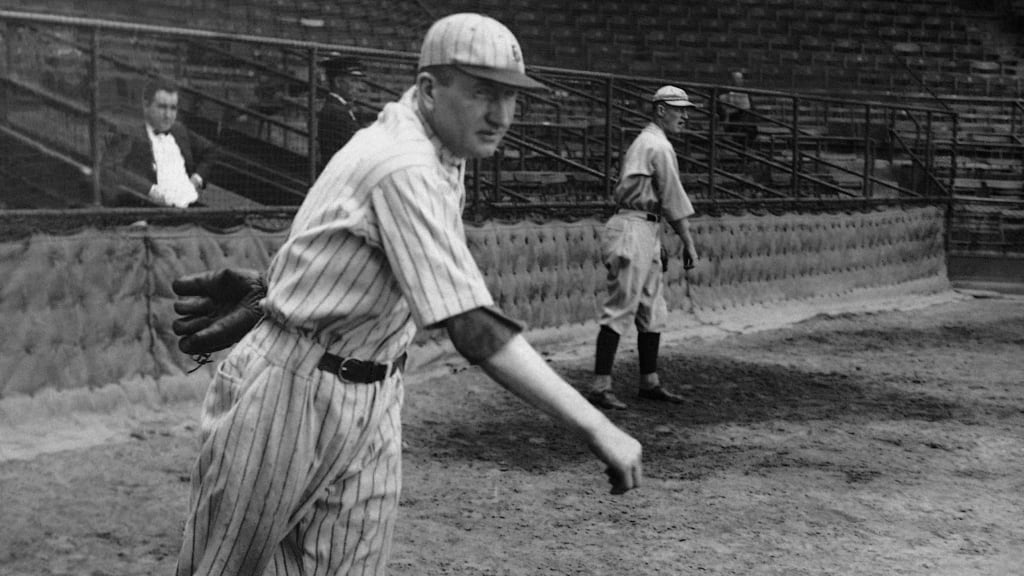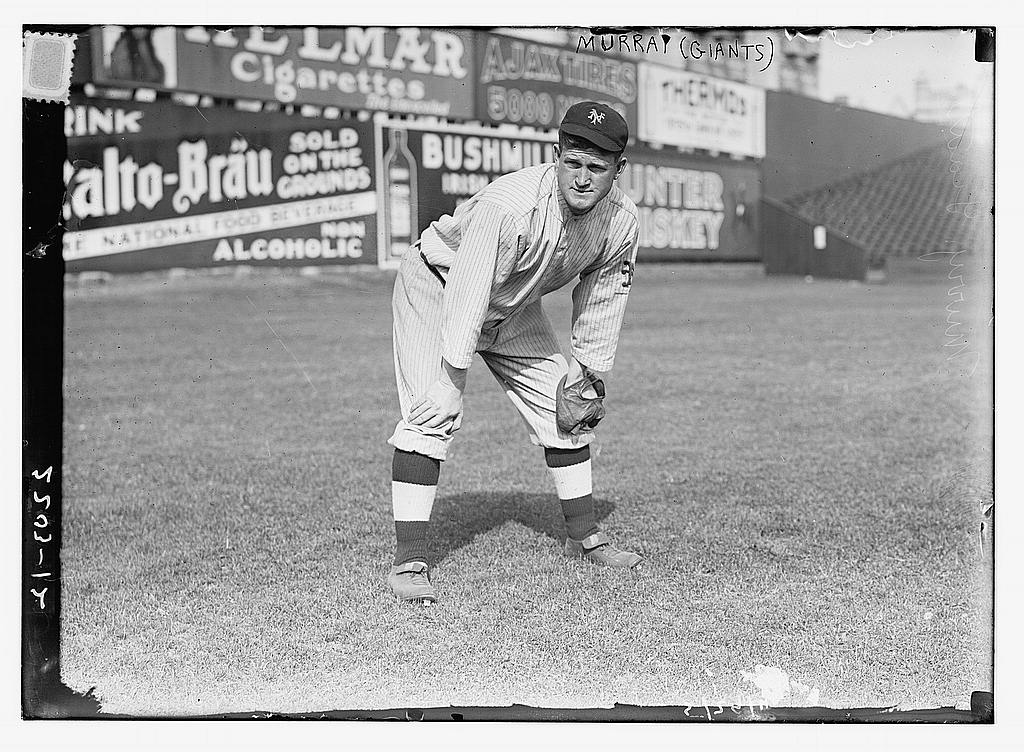
Who are the best players born on each day of the year? We have a list for every day on the calendar.
Here’s a subjective ranking of the top five for March 4, the most commanding day of the year.
1) Dazzy Vance (1891)
Charles Arthur Vance got his nickname from the dazzling fastball that helped him win 197 Major League games – but nary a one until he had turned 31. Vance mostly pitched in the Minor Leagues from 1912-21, save for nine games in the big leagues in 1915 and two more in ’18 (all for a cumulative 0-4 record). A sore arm plagued him for much of that time until a fortuitous poker game in 1920, while he was pitching in New Orleans.
As noted in his SABR bio, Vance rapped his arm on the table while collecting his winnings and still felt it the next morning. He went to see a doctor, who came up with a cure (exactly what is not known) that had eluded others the pitcher had consulted. Vance won 21 games in 1921, then returned to the Majors to stay the next year. In his first four seasons with the Brooklyn Robins (the Dodgers nickname wouldn’t stick until 1932), Vance won 18, 18, 28 and 22 games, the latter two leading the Majors. He’d go on to collect 190 of his 197 career victories for Brooklyn and was voted into the Hall of Fame by the BBWAA in 1955.

2) Lefty O’Doul (1897)
Originally a pitcher (and a teammate of Babe Ruth’s when the Bambino first joined the Yankees), O’Doul became a .349 career hitter after an arm injury ended his days on the mound in 1923. After four seasons in the Pacific Coast League, O’Doul the outfielder resurfaced with the Giants in 1928. He led the NL with a .398 average and finished second in MVP voting in ’29 with the Phillies and pinch-hit in the first All-Star Game in 1933.
But O’Doul’s biggest influence came after his playing career ended in 1934. He returned to San Francisco, his hometown, to manage the Seals, where he’d help mold a young Joe DiMaggio. O’Doul demurred whenever someone tried to give him credit for the hitter DiMaggio became. “I was just smart enough to leave him alone,” O’Doul apparently said. He had a hand in the development of Ted Williams, Willie Mays and Willie McCovey, too. O’Doul managed in the PCL from 1935-57 and is in the league’s hall of fame.
O’Doul also helped popularize baseball in Japan, even giving the Tokyo Giants their name after the Major League team he had played and, once they moved West, coached for. He’s a member of the Japanese Baseball Hall of Fame and the San Francisco Bay Area Sports Hall of Fame. The Early Baseball Era Committee considered O’Doul for the National Baseball Hall of Fame in 2022, but he was not elected.

3) Jeff Pfeffer (1888)
Neither Pfeffer nor his older brother, Big Jeff, who also pitched during the Dead Ball Era, was named Jeff or Jeffrey or Geoffrey or anything of that nature. The nickname was given to the older hurler – Francis Xavier Pfeffer – because he reminded others of a boxer by the name of Jim Jeffries, a heavyweight champion at the turn of the century. And for some reason, Edward Joseph Pfeffer also became known as Jeff. The younger Pfeffer pitched nine years for Brooklyn, leaving for St. Louis (the Cardinals) in 1921, a year before Vance stuck with the Robins. Pfeffer was the ace of the 1916 NL champions, going 25-11 with a 1.92 ERA two years after posting a 23-12 record with a 1.97 ERA. He also helped Brooklyn to the 1920 pennant with a 16-9 record, but his ERA was 3.01, signaling the downside of his career at 32. He was done at 36, retiring after the ’24 season with a 158-112 record and 2.77 career ERA.
4) Red Murray (1884)
John Joseph Murray got his nickname from his copper locks. A speedy outfielder and cleanup hitter on John McGraw’s pennant-winning Giants of 1911-13, Murray was, according to some, one of the least-heralded stars of the Dead Ball Era. He led the NL in home runs in 1909 – with seven – and stole at least 48 bases for four consecutive seasons from 1908-11. Murray’s ability as a defender led to reporters calling right field at the Polo Grounds Murray’s Hill.

5) Nick Castellanos (1992)
The slugger’s 233 home runs through the 2024 season easily lead all players born on this date; O’Doul is the only other one to surpass 100 (he hit 113). Castellanos’ 34 home runs in ’21 are just three shy of Murray’s career total in 11 Dead Ball seasons.
Others of note:
Clyde McCullough (1917)
McCullough’s 15-year career – all but four games of it spent behind the plate – is second only to Vance among players born on this date. The Cubs’ regular catcher from 1941-43, McCullough missed his age 27 and 28 seasons while serving in the Navy during World War II, receiving his discharge in September 1945. Even though McCullough didn’t play in a regular-season game, Commissioner Happy Chandler allowed the Cubs to add him to the World Series roster. In his only at-bat, McCullough struck out. A two-time All-Star, he finished his career with a .252/.314/.358 line in 1,098 games from 1940-56.
Tom Grieve (1948)
The sixth overall pick of the 1966 Draft by the Senators, Grieve made his debut with Washington in 1970, then moved with the team to Texas, spending seven of his nine seasons with the Rangers franchise. After his career ended in ’79, he joined Texas’ front office and was named general manager in September 1984 at the age of 36. He held that role until ’94, then moved to the broadcast booth the next season, where he stayed until retiring after the 2022 season. His long association with the franchise has earned him the nickname “Mr. Ranger.”
Sam Perlozzo (1951)
A 5-foot-9 middle infielder, Perlozzo had just 26 Major League at-bats in the late 1970s but embarked on a long coaching career after his playing days. He was the third-base coach for the 1990 World Series champion Reds, and later managed the Orioles to a 122-164 record from August 2005 to June 2007.
Sergio Romo (1983)
The hirsute reliever won three World Series rings with the Giants from 2010-14, closing out the sweep in ’12 with a strikeout of Miguel Cabrera.
Want to see more baseball birthdays for March 4? Find the complete list on Baseball Reference.
